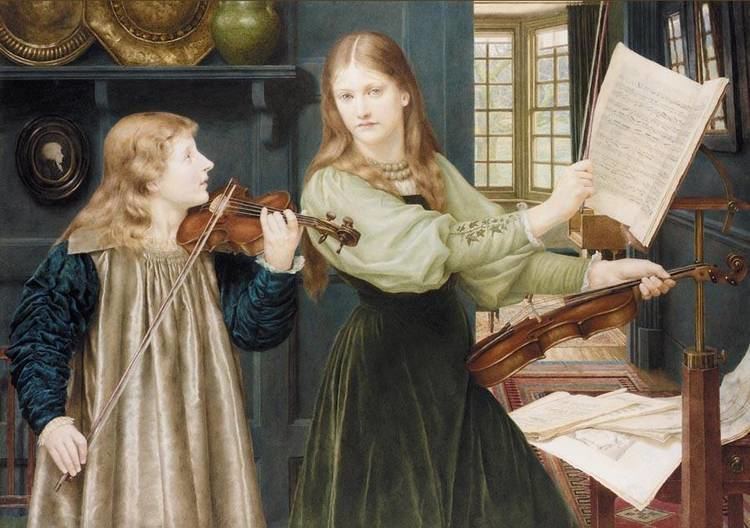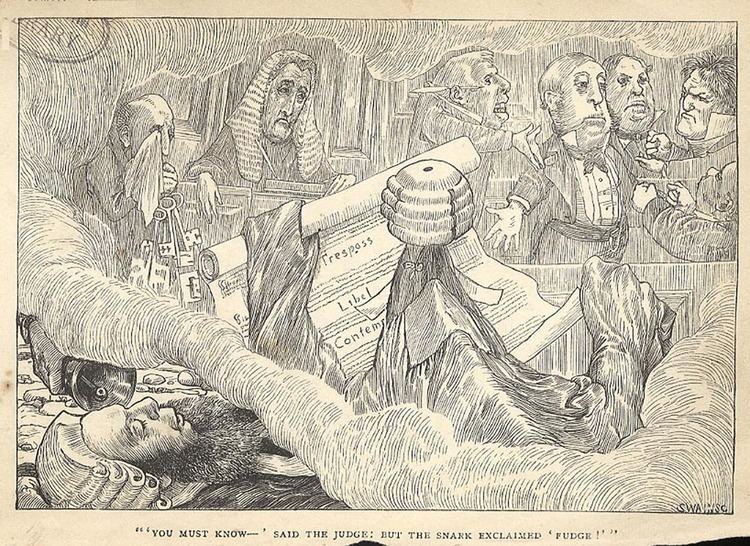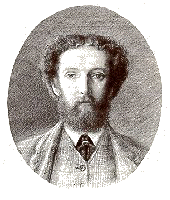Name Henry Holiday Role Illustrator | Books The Hunting of the Snark | |
 | ||
Similar People Beatrice Portinari, Lewis Carroll, Dante Alighieri | ||
Henry Holiday (17 June 1839 – 15 April 1927) was an English historical genre and landscape painter, stained glass designer, illustrator and sculptor. He is considered to be a member of the Pre-Raphaelite school of art.
Contents

Early years and training

Holiday was born in London. He showed an early aptitude for art and was given lessons by William Cave Thomas. He attended Leigh's art academy (where a fellow student was Frederick Walker) and in 1855, at the age of 15, was admitted to the Royal Academy. Through his friendship with Albert Moore and Simeon Solomon he was introduced to the artists Dante Gabriel Rossetti, Edward Burne-Jones and William Morris of the Pre-Raphaelite Brotherhood. This movement was to be pivotal in his future artistic and political life.

In that same year, 1855, Holiday made a journey to the Lake District. This was to be the first of many trips to the area, where he would often holiday for long periods of time. Whilst in the Lake District, he spent much of his time sketching the views which were to be seen from the various hills and mountains. He wrote, "For concentrated loveliness, I know nothing that can quite compare with the lakes and mountains of Westmorland, Cumberland and Lancashire."
Paintings
Holiday worked in both oils and watercolours. In 1858, his first picture, a landscape painting, was exhibited at the Royal Academy and immediately sold - from that year his work was frequently shown at the Academy and elsewhere. Other pictures include:
Holiday spent a lot of time at the studios of Sir Edward Burne-Jones, where groups of artists would meet to discuss, exchange and pool ideas. The influence of Burne-Jones can be seen in Holiday's work.
Stained Glass
.
In 1861, Holiday accepted the job of stained glass window designer for Powell's Glass Works - after Burne-Jones had left to work for Morris & Co. During his time there he fulfilled over 300 commissions, mostly for customers in the USA. He left in 1891 to set up his own glass works in Hampstead, producing stained glass, mosaics, enamels and sacerdotal objects.
Holiday's stained glass work can be found all over Britain but some of his best is at the chapel of Worcester College, Oxford (c.1865), Westminster Abbey (the Isambard Kingdom Brunel memorial window, 1868), St. Luke’s church in Kentish Town and St Mary Magdalene, Paddington (1869).
Other work and personal life
Holiday also did some sculpture, in 1861 producing a piece called Sleep which attracted favourable critical interest.
Holiday worked for architect William Burges for a period, including providing wall and ceiling paintings for Worcester College, Oxford (1863–64) and furniture paintings - including Sleeping Beauty for the headboard in the bedroom of Burges's home The Tower House itself. The Sleeping Beauty bed is now in the collection of the Cecil Higgins Art Gallery & Bedford Museum. Holiday has four oil paintings in British national public collections.
In October 1864, Holiday married Catherine Raven and they moved to Bayswater, London. His wife was a talented embroiderer who worked for Morris & Co. They had one daughter, Winifred.
In 1867, Holiday visited Italy for the first time and was inspired by the originality of the Renaissance artists he saw on display there. In 1871 he went to Ceylon as part of the " Eclipse Expedition". His astronomical drawings were subsequently published in the national press and attracted great interest.
On his return to England in 1872, he commissioned architect Basil Champneys to design a new family home in Branch Hill, Hampstead, which was named "Oak Tree House" - in 1888, William Gladstone himself was a visitor.
In January 1874, Holiday was commissioned by Lewis Carroll to illustrate The Hunting of the Snark. He remained friends with the author throughout his life.
In 1907, Holiday went to Egypt, painting a series of watercolours and illustrations on ancient Egyptian themes. These were exhibited at "Walker's Gallery", London, in March 1908. In 1907-08, he commissioned the building of a holiday home, Betty Fold in his favourite part of the Lake District.
Between 1912 and 1919 he painted the apse of the east end of St Benedict's Church at Bordesley, Birmingham, depicting Christ in Glory with angels, and saints in arcading, below, in Byzantine-style.
Holiday had been a socialist throughout his life and, together with his wife Kate and daughter Winifred, supported the Suffragette movement. The family were close acquaintances of Emmeline Pankhurst and her daughter, and had organised local suffragette meetings in the Lake District.
Holiday died on 15 April 1927 in London, two years after his wife, Kate. His nephew, Gilbert Holiday (1879–1937), son of Sir Frederick Holiday, was also an artist who also has paintings in British collections.
